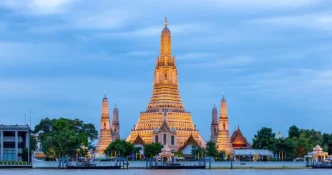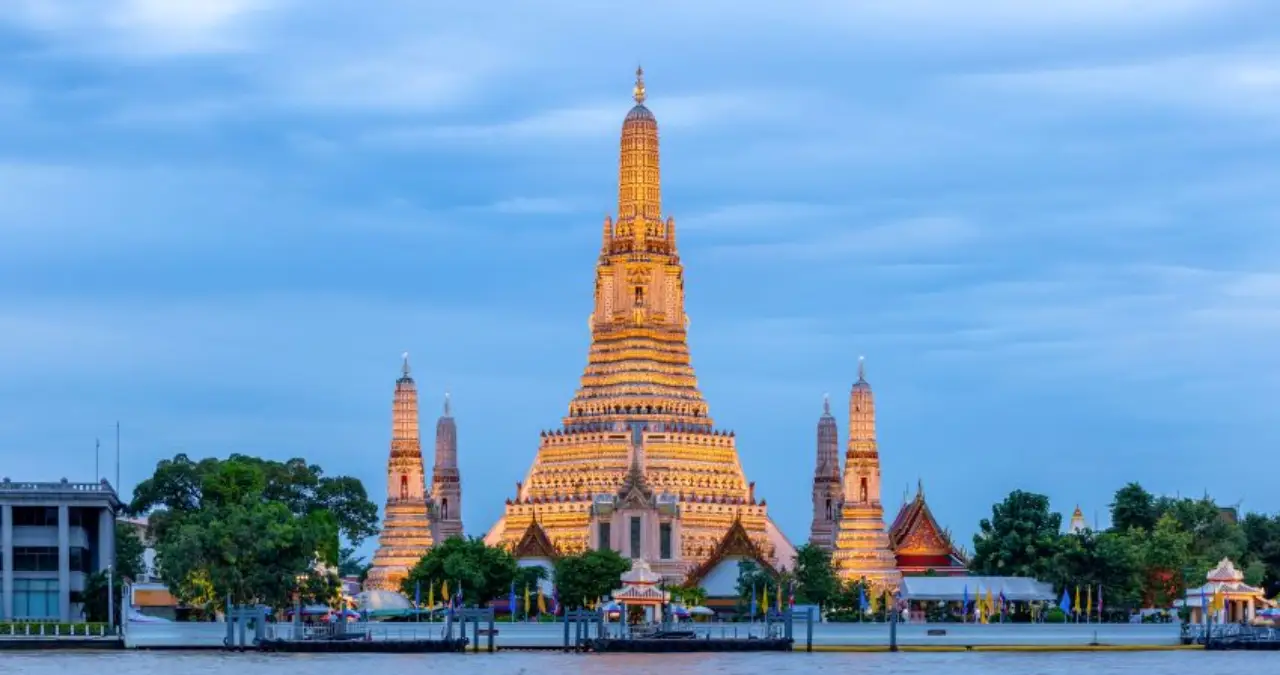Thailand, long the jewel of Southeast Asia’s tourism crown, is grappling with a stark reality: its once-booming visitor numbers are faltering. Despite a historic high of nearly 40 million tourists in 2019, the Kingdom welcomed just 35.5 million in 2024, lagging behind regional competitors like Malaysia and Japan. With projections for 2025 already scaled back, Thai authorities are pivoting to a “quality over quantity” strategy, targeting high-spending travelers from Europe, the United States, and the Middle East. But as global economic uncertainties and geopolitical tensions loom, can this recalibration deliver sustainable growth, or is it a risky gamble for an industry that accounts for roughly 12% of the nation’s GDP?
A Post-Pandemic Struggle
Thailand’s tourism sector, a cornerstone of its economy, has struggled to regain pre-pandemic momentum. After reopening borders in 2021, the country saw a modest recovery with 11 million arrivals in 2022, surging to 28.2 million in 2023. Yet, the 2024 figure of 35.5 million fell short of expectations, and early 2025 data shows a 3% decline compared to the same period last year. The Tourism Authority of Thailand (TAT) has downsized its 2025 target from 39 million to simply matching last year’s total—a tacit admission of the challenges ahead.
The decline is not merely numerical. Thailand’s traditional dominance in the region is under threat, with Malaysia recording 38 million arrivals and Japan 36.9 million in 2024. This shift reflects broader changes in global travel patterns, compounded by Thailand’s inability to recapture key markets. While the TAT promotes long-haul routes, sports tourism, and cultural festivals, analysts warn that accessibility issues—such as recent air route disruptions due to Middle East conflicts—could deter the very high-spending tourists Thailand now seeks.
“2025 is a pivotal point in the recovery from the pandemic where Thailand needs to rethink what it’s doing” said Gary Bowerman, a tourism policy analyst. “This isn’t going to be a quick turnaround.”
Quality Over Quantity: A Strategic Pivot
At the heart of Thailand’s revised approach is a focus on “quality” tourists—those who spend more and engage in deeper, more meaningful experiences. This strategy, first floated in 2018, gained renewed emphasis at the Thailand Tourism Forum earlier this year, where Tourism and Sports Minister Sorawong Thienthong outlined it as one of five key priorities. The TAT is targeting markets with high purchasing power, noting increased arrivals from Germany, Italy, the United Kingdom, Australia, and several Gulf nations between January and June 2025 compared to the prior year.
“These are high-purchasing-power travellers, exactly the type of tourists Thailand’s revised strategy is now prioritising” said TAT governor Thapanee Kiatphaibool. Initiatives include eco-tourism projects, luxury infrastructure upgrades like high-speed rail and digital visa systems, and promotional campaigns spotlighting Thailand’s cultural and natural assets.
For some in the hospitality sector, quality equates to luxury. Ian Di Tullio, Chief Commercial Officer at Minor Hotels, argues that Thailand is shedding its image as a budget destination, pointing to its growing reputation in wellness, design, and gastronomy. From starring in HBO’s White Lotus to boasting six Bangkok restaurants on the World’s 50 Best list, the country is positioning itself as a premium destination. Yet, critics question whether this narrow focus on high spend truly benefits local communities or merely enriches corporate stakeholders.
“Luxury travellers have the high spend, but it does not necessarily translate into revenue for the local community” said Hannah Pearson, founding partner of tourism consultancy Pear Anderson. She advocates for a broader definition of quality that includes sustainable, community-driven experiences, citing initiatives like Local Alike, a social enterprise offering immersive visits to Thai communities in Bangkok, Chiang Mai, and Phuket.
The Chinese Conundrum
No discussion of Thai tourism is complete without addressing the dramatic drop in Chinese visitors, once the industry’s lifeblood. In 2019, 11.1 million Chinese tourists flocked to Thailand, but in the first five months of 2025, fewer than 2 million arrived—a nearly one-third decline from 2024. This slump stems from a mix of safety concerns and shifting travel preferences. High-profile incidents, such as the kidnapping of Chinese actor Wang Xing near the Myanmar border and a shooting at Bangkok’s Siam Paragon mall in 2023, have fueled perceptions of instability.
Popular media, including the 2023 Chinese film No More Bets, which depicts human trafficking in a setting resembling Southeast Asia, has further dented Thailand’s appeal. Recent political protests, government uncertainty, and security alerts in southern provinces add to the “scare factor” noted by Bowerman. “With the latest Thailand-Cambodia border conflict, it could perpetuate the idea of Thailand being an unstable country to visit” said Pearson.
Efforts to woo Chinese tourists persist, with the Association of Thai Travel Agents proposing a US$10 million subsidy for 1,000 flights from 20 Chinese cities, and TAT launching campaigns like “Sawadee Nihao” to showcase safety and hospitality. Yet, results remain elusive. “At the moment, it’s not reaping rewards” said Bowerman, highlighting a deeper issue: Thailand feels stagnant to many Chinese travelers, lacking the innovation needed to draw repeat visits.
Analysts like Wolfgang Georg Arlt of the Meaningful Tourism Centre suggest that domestic economic pressures in China are reducing first-time international travelers, while repeat visitors see Thailand as “ticked off” their list. Lowering prices won’t solve this; instead, Thailand must reinvent its offerings to align with younger, independent Chinese travelers seeking authentic, unique experiences, according to Krittinee Nuttavuthisit, a marketing professor at Chulalongkorn University.
Regional Rivalry and Economic Stakes
As Thailand pivots to new markets, it faces fierce competition within Southeast Asia and beyond. Malaysia and Vietnam are aggressively courting international visitors, with Malaysia extending visa-free entry for Chinese nationals and Vietnam expanding e-visa policies and direct flights. “Southeast Asia has become a hyper-competitive space for international tourists” said Pearson, noting that Thailand’s regional edge is slipping.
Globally, destinations in the Middle East, Central Asia, Japan, and South Korea are also vying for the same high-spending travelers. While Chinese outbound travel is projected to surpass 2019 levels, Thailand risks losing market share without a dual focus on acquisition and retention. “Any country’s loss is another country’s gain” said Pearson.
The economic implications are stark. TAT has slashed its 2025 tourism revenue forecast from US$69 billion to US$60 billion, a significant hit for an economy where tourism drives growth. “The strong engine of growth is being shut down” said Pipat Luengnaruemitchai, chief economist at Kiatnakin Phatra Securities, warning of ripple effects on domestic consumption and businesses.
Looking Ahead: A Balancing Act
Thailand stands at a crossroads. Its “quality over quantity” mantra offers a vision of sustainable tourism, but ambiguities remain about what quality truly means and whether it can offset the loss of mass markets like China. While infrastructure upgrades and luxury branding aim to attract elite travelers, smaller community-based projects hint at a more inclusive path forward—if they can scale.
Yet, doubts linger over whether new markets from Europe, India, or the Middle East can fill the void left by Chinese visitors, whose cultural affinity for Thailand remains strong but untapped. “You have to continue trying to work the Chinese market. That’s just inevitable for a Southeast Asian country” said Bowerman. As Thailand navigates economic headwinds and regional rivalries, the question remains: can it redefine its tourism identity without losing the diverse appeal that made it a global favorite?
















